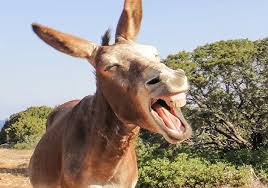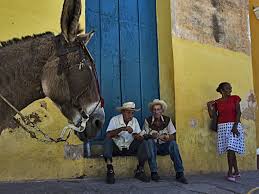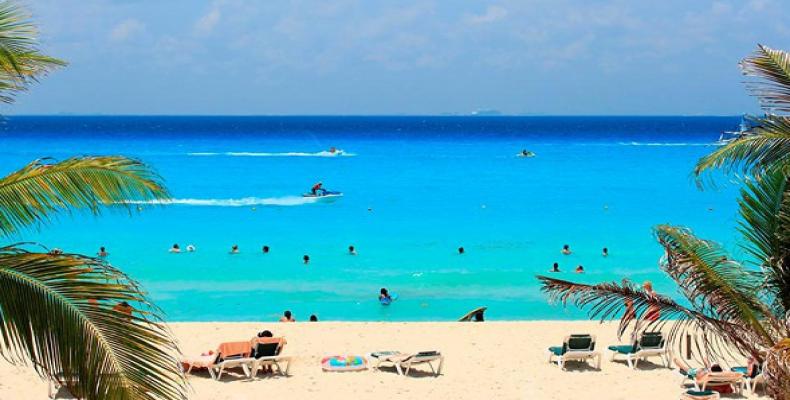 FAMOUS CUBAN BURROS, FROM “BAINOA, PERICO AND THE BURRO PANCHO DE MAYABE”. VIDEOS.
FAMOUS CUBAN BURROS, FROM “BAINOA, PERICO AND THE BURRO PANCHO DE MAYABE”. VIDEOS.
In Bainoa, located in the Havana-Matanzas plain, it is one of the coldest places in Cuba, the winters are very harsh. The town with red soils has the national record for low temperatures of 0.6 degrees Celsius, registered in 1996. For this reason, on cold winter nights, instead of clipping the monkey, “the Donkey whistles”. One of the things that have made this Cuban town famous.
They say that there was a burrito that was an incredible drunk capable of having a case of beers in less than a rooster crows, and of being as enthusiastic as if nothing had happened. He was loose on the streets, in one house they gave him corn, in another water and there was no shortage of people who tried to have fun at his expense doing all kinds of evil things, among them, they tied empty cans to his tail to see him run scared from one end to the other of the small town. But they also say that the animal used to knock on the doors of the houses where they used to treat it with affection and where they gave it food or drink.
This little town should feel very grateful for this little donkey since he came out of anonymity thanks to his peculiar ‘Bainoa donkey’, although later it would also be highlighted by the record of low temperature in Cuba. The Burro de Bainoa was not the only one in Cuba with these characteristics. In Santa Clara, he was emulated by the ‘Burro Perico’, with the same or similar antics, as well as the ‘Burro Pancho’, addicted to beer, and who I had to meet one morning when I got up early and was staying at the hotel located in the Mirador de Mayabe, in Holguín. I approached to enjoy the panorama and I was surprised by his braying, there I came to know his story, and see how he really drank from the spout of the bottle, one beer after another. From donkey father to donkey son they go on passing the baton of being the beer donkey of the hotel facility on the Mayabe hill. And of course, it has a song:
Mayabe’s donkey has tremendous fly
If you give him beer, the donkey drinks it
In a little viewpoint in the East, you can hear the braying
It is the song of ‘Panchito’, who wants to take
At nightfall in Cuba, he dies for guarachear
And the horseshoes start to ring
These donkeys are not protagonists or appear as faithful companions of the protagonist, as occurs in the masterpiece of Spanish literature “The ingenious hidalgo Don Quijote de La Mancha”, or the Platero donkey, from the 1956 Nobel Prize for Literature work Juan Ramón Jiménez “Platero and I” is neither the animal that symbolizes the Democratic Party of the United States, nor does they play the role of the donkey Benjamin in George Orwell’s 1945 Book Rebellion on the Farm, where he represents the intellectual class, conscious of the manipulation of the pig Napoleón, but that does not participate in the criticism, stating that donkeys live many years.
They will not be as famous as the previous ones, but they are well-known characters in Cuba in which truth or exaggeration can be woven, but in general, as close relatives of the noble brute, the horse, they are intelligent, cautious, friendly, playful and interested in learning. Once you have their trust they can be good companions in work and recreation.
 CELEBRES BURROS CUBANOS, EL DE “BAINOA, EL DE PERICO Y EL BURRO PANCHO DE MAYABE”.
CELEBRES BURROS CUBANOS, EL DE “BAINOA, EL DE PERICO Y EL BURRO PANCHO DE MAYABE”.
En Bainoa, localizada en la llanura Habana-Matanzas, es uno de los lugares más fríos de Cuba, los invierno son muy crudos. El poblado de suelos rojos, tiene el récord nacional de bajas temperaturas con 0,6 grados celsius, registrado en 1996. Por eso en las frías noches de invierno, allí en lugar de cliflar el mono, “chifla el Burro”. Una de las cosas que le ha dado fama a este poblado cubano.
Cuentan que había un burrito que era un borracho increíble capaz de tomarse una caja de cervezas en menos de lo que canta un gallo, y de seguir tan campante como si nada hubiera pasado. Andaba suelto por las calles, en una casa le daban maíz, en otra agua y no faltaba quien tratara de divertirse a su costa haciéndole toda clase de maldades, entre ellas le amarraban latas vacías al rabo para verlo correr asustado de una punta a la otra del pequeño poblado. Pero también cuentan que el animalito acostumbraba a tocar la puerta de las casas donde solían tratarlo con cariño y donde le daban de comer o de beber.
Este pueblecito debe sentirse muy agradecido de este burrito ya que el mismo salió del anonimato gracias a su peculiar ‘burro de Bainoa’, aunque después sería también destacado por el record de temperatura baja en Cuba. El Burro de Bainoa no fue el único en Cuba con esas características. En Santa Clara lo emulaba el ‘Burro Perico’, con iguales o parecidas travesuras, así como el ‘Burro Pancho’, adicto a la cerveza, y que me tocó conocer una mañana cuando me levanté temprano y me encontraba hospedado en el hotel situado en el Mirador de Mayabe, en Holguín. Me acerqué para disfrutar el panorama y fuí sorprendido por su rebuzno, ahí vine a conocer su historia, y ver como realmente se tomaba del pico de la botella, una cerveza tras otra. De burro padre a burro hijo se van pasando el relevo de ser el burro cervecero de la instalación hotelera del cerro de Mayabe. Y por supuesto tiene una canción:
El burro de Mayabe, tiene tremendo vuele
Si tú le das cerveza, el burro se la bebe
En un miradorcito de Oriente se oye rebuznar
Es el canto de ‘Panchito’, que quiere tomar
Al caer la noche en Cuba muere por guarachear
Y las herraduras comienzan a sonar
Estos burros no son protagonistas o aparecen como fieles compañeros del protagonista, como ocurre en la obra maestra de literatura española “El ingenioso hidalgo don Quijote de La Mancha”, o el burro Platero, de la obra del Premio Nobel de Literatura de 1956 Juan Ramón Jiménez “Platero y yo”, ni es el animal que simboliza al Partido Demócrata de los Estados Unidos, ni tienen el papel del burro Benjamín en el Libro de 1945 Rebelión en la granja de George Orwell, donde representa a la clase intelectual, consciente de la manipulación del cerdo Napoleón, pero que no se hace partícipe de la crítica, manifestando que los burros viven muchos años.
No serán tan famosos como los anteriores, pero son personajes muy conocidos en Cuba en los que se puede tejer la verdad o la exageración, pero en general como parientes cercanos del noble bruto, el caballo, son animales inteligentes, cautelosos, amistosos, juguetones e interesados en aprender. Una vez que se haya ganado su confianza pueden ser buenos compañeros en trabajo y recreación.
Agencies/ Wiki/ MemoriasCubanas/ Internet Photos/ Arnoldo Varona/ www.TheCubanHistory.com
THE CUBAN HISTORY, HOLLYWOOD.









